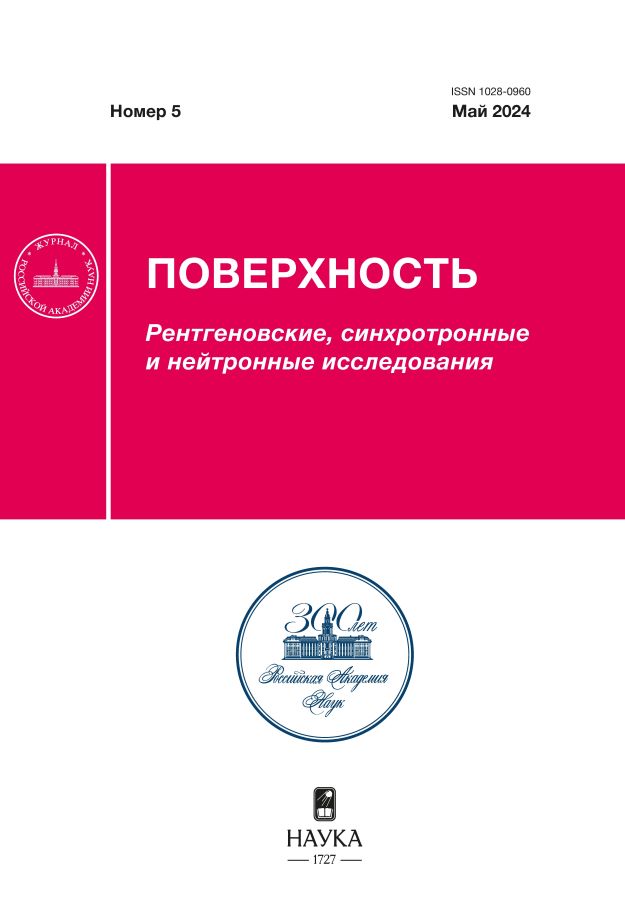Study of the Influence of Ferromagnetic Impurity Concentration on Magnetic Properties of Binary Palladium–Cobalt Alloy
- Авторлар: Gumarova I.I.1, Gumarov A.I.1, Yanilkin I.V.1
-
Мекемелер:
- Kazan Federal University
- Шығарылым: № 5 (2024)
- Беттер: 24-28
- Бөлім: Articles
- URL: https://freezetech.ru/1028-0960/article/view/664638
- DOI: https://doi.org/10.31857/S1028096024050041
- EDN: https://elibrary.ru/FUMGCX
- ID: 664638
Дәйексөз келтіру
Аннотация
A comparative study of the magnetic properties of a palladium–cobalt alloy with an impurity content of up to 0.05 at. % was made using calculations based on the density functional theory and experimental methods. It was found that the alloys had ferromagnetic ordering, which depended on the impurity concentration. At very low concentrations, less than 1 at. %, the magnetic moment per impurity atom can reach 25 µB.
Негізгі сөздер
Толық мәтін
Авторлар туралы
I. Gumarova
Kazan Federal University
Хат алмасуға жауапты Автор.
Email: iipiyanzina@kpfu.ru
Ресей, Kazan
A. Gumarov
Kazan Federal University
Email: iipiyanzina@kpfu.ru
Ресей, Kazan
I. Yanilkin
Kazan Federal University
Email: iipiyanzina@kpfu.ru
Ресей, Kazan
Әдебиет тізімі
- Fallot M. // Ann. Phys. 1938. V. 11. P. 291. https://www.doi.org/10.1051/anphys/193811100291
- Crangle J. // Philos. Mag. 1960. V. 5. P. 335. https://www.doi.org/10.1080/14786436008235850
- Nieuwenhuys G.J. // Adv. Phys. 1975. V. 24. P. 515. https://www.doi.org/10.1080/00018737500101461
- Bagguley D.M.S, Robertson J.A. // J. Phys. F: Met. Phys. 1974.V. 4. P. 2282. https://www.doi.org/10.1088/0305-4608/4/12/023
- Bagguley D.M.S, Crossley W.A., Liesegang J. // Proc. Phys. Soc. 1967. V. 90. P. 1047. https://www.doi.org/10.1088/0370-1328/90/4/316
- Рязанов В.В. // УФН. 1999. Т. 169. С. 920. https://www.doi.org/10.3367/UFNr.0169.199908g.0920
- Larkin T.I., Bol’ginov V.V., Stolyarov V.S, Ryazanov V.V., Vernik I.V., Tolpygo S.K., Mukhanov OA. // Appl. Phys. Lett. 2012. V. 100. P. 222601. https://www.doi.org/10.1063/1.4723576
- Soloviev I.I., Klenov N.V., Bakurskiy S.V., Kupriyanov M.Y., Gudkov A.L., Sidorenko A.S. // Beilstein J. Nanotechnol. 2017. V. 8. P. 2689. https://www.doi.org/10.3762/bjnano.8.269
- Esmaeili A., Yanilkin I.V., Gumarov A.I., Vakhitov I.R., Yusupov R.V., Tatarsky D.A., Tagirov L.R. // Sci. China Mater. 2021. V. 64. P. 1246. https://www.doi.org/10.1007/s40843-020-1479-0
- Mohammed W.M., Yanilkin I.V., Gumarov A.I., Kiiamov A.G., Yusupov R.V., Tagirov L.R. // Beilstein J. Nanotechnol. 2020. V.11. P. 807. https://www.doi.org/10.3762/bjnano.11.65
- Yanilkin I.V., Mohammed W.M., Gumarov A.I., Kiia-mov A.G., Yusupov R.V., Tagirov L.R. // Nanomaterials 2021. V. 11. P. 64. https://www.doi.org/10.3390/nano11010064
- Gumarov A.I., Yanilkin I.V., Yusupov R.V., Kiiamov A.G., Tagirov L.R., Khaibullin R.I. // Mater. Lett. 2021. V. 305. P. 130783. https://www.doi.org/10.1016/j.matlet.2021.130783
- Gumarov A.I., Yanilkin I.V., Rodionov A.A., Gabbasov B.F., Yusupov R.V., Aliyev M.N., Tagirov L.R. // Appl. Magn. Reson. 2022. V. 53. P. 875. https://www.doi.org/10.1007/s00723-022-01464-0
- Hohenberg P., Kohn W. // Phys. Rev. 1964. V. 136. P. B864. https://www.doi.org/10.1103/PhysRev.136.B864
- Kohn W., Sham L.J. // Phys. Rev. 1965. V. 140. P. A1133. https://www.doi.org/10.1103/PhysRev.140.A1133
- Perdew J.P., Burke K., Ernzerhof M. // Phys. Rev. Lett. 1996. V. 77. P. 3865. https://www.doi.org/10.1103/PhysRevLett.77.3865
- Blöchl P.E. // Phys. Rev. B. 1994. V. 50. P. 17953. https://www.doi.org/10.1103/PhysRevB.50.17953
- Kresse G., Furthmüller J. // Comp. Mater. Sci. 1996. V. 6. P. 15. https://www.doi.org/10.1016/0927-0256(96)00008-0
- Kresse G., Furthmüller J. // Phys. Rev. B. 1996. V. 54 P. 11169. https://www.doi.org/10.1103/PhysRevB.54.11169
- Kresse G., Joubert D. // Phys. Rev. B. 1999. V. 59. P. 1758. https://www.doi.org/10.1103/PhysRevB.59.1758
- MedeA version 3.7; MedeA is a registered trademark of Materials Design, Inc., San Diego, USA.
- Dudarev S.L., Botton G.A., Savrasov S.Y., Humphreys C.J., Sutton A.P. // Phys. Rev. B. 1998. V. 57. № 3. P. 1505. https://www.doi.org/10.1103/PhysRevB.57.1505
- Calderon C.E., Plata J.J., Toher C. et al. // Comp. Mater. Sci. 2015. V. 108. P. 233. https://www.doi.org/10.1016/j.commatsci.2015.07.019
- Piyanzina I., Gumarov A., Khaibullin R., Tagirov L. // Crystals. 2021. V. 11. P. 1257. https://www.doi.org/10.3390/cryst11101257
- Himpsel F.J., Ortega J.E., Mankey G.J., Willis R.F. // Magn. Nanostructures, Adv. Phys. 1998. V. 47. P. 511. https://www.doi.org/10.1080/000187398243519
Қосымша файлдар













